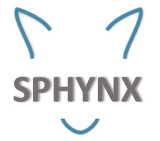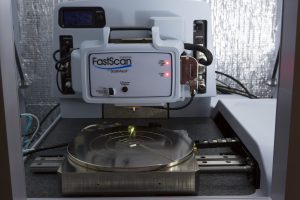 |
IMAFMP Publications |
- « Understanding the evolution of mechanical properties under irradiation in nuclear glasses via experiments. »
- M. Barlet, J.-M. Delaye, D. Bonamy and C. L. Rountree
, In 13th International Conference on Fracture. Beijing, China (June 16-21, 2013) - [BibTeX] [URL]
@conference{Barlet2013,
author = {M. Barlet and J.-M. Delaye and D. Bonamy and C. L. Rountree},
title = {Understanding the evolution of mechanical properties under irradiation in nuclear glasses via experiments.},
booktitle = {13th International Conference on Fracture},
year = {2013},
url = {http://www.gruppofrattura.it/ocs/index.php/ICF/icf13/paper/download/11521/10900}
}
- « Influence of Electronic Irradiation on Failure and Hardness Properties of Pure Silica Glasses «
- M. Barlet, J.-M. Delaye, M. Gennisson, R. Caraballo, B. Boizot, D. Bonamy and C. Rountree
Procedia Materials Science . 7(0):286 – 293 (2014) - DOI: http://dx.doi.org/10.1016/j.mspro.2014.10.037
[Abstract] [BibTeX] [arXiv] [URL]
@article{Barlet2014,
author = {M. Barlet and J-M. Delaye and M. Gennisson and R. Caraballo and B. Boizot and D. Bonamy and C.L. Rountree},
title = {Influence of Electronic Irradiation on Failure and Hardness Properties of Pure Silica Glasses },
journal = {Procedia Materials Science },
year = {2014},
volume = {7},
number = {0},
pages = {286 - 293},
note = {2nd International Summer School on Nuclear Glass Wasteform: Structure, Properties and Long-Term Behavior, SumGLASS 2013 },
url = {http://www.sciencedirect.com/science/article/pii/S2211812814010803},
doi = {10.1016/j.mspro.2014.10.037}
}
- « Antiferromagnetic long-range spin ordering in Fe- and NiFe2-doped BaTiO3 multiferroic layers »
- A. Barbier, T. Aghavnian, V. Badjeck, C. Mocuta, D. Stanescu, H. Magnan, C. L. Rountree, R. Belkhou, P. Ohresser and N. Jedrecy
Physical Review B. 91(3):035417 (January, 2015) - DOI: 10.1103/PhysRevB.91.035417
[Abstract] [BibTeX]
@article{Barbier2015,
author = {Barbier, A. and Aghavnian, T. and Badjeck, V. and Mocuta, C. and Stanescu, D. and Magnan, H. and Rountree, C. L. and Belkhou, R. and Ohresser, P. and Jedrecy, N.},
title = {Antiferromagnetic long-range spin ordering in Fe- and NiFe2-doped BaTiO3 multiferroic layers},
journal = {Physical Review B},
year = {2015},
volume = {91},
number = {3},
pages = {035417},
doi = {10.1103/PhysRevB.91.035417}
}
- « Hardness and toughness of sodium borosilicate glasses via Vickers's indentations »
- M. Barlet, J.-M. Delaye, T. Charpentier, M. Gennisson, D. Bonamy, T. Rouxel and C. L. Rountree
Journal of Non-crystalline Solids. 417:66-79 (June, 2015) - DOI: 10.1016/j.jnoncrysol.2015.02.005
[Abstract] [BibTeX]
@article{Barlet2015,
author = {Barlet, Marina and Delaye, Jean-Marc and Charpentier, Thibault and Gennisson, Mickael and Bonamy, Daniel and Rouxel, Tanguy and Rountree, Cindy L.},
title = {Hardness and toughness of sodium borosilicate glasses via Vickers's indentations},
journal = {Journal of Non-crystalline Solids},
year = {2015},
volume = {417},
pages = {66--79},
doi = {10.1016/j.jnoncrysol.2015.02.005}
}
- « Local electronic structure and photoelectrochemical activity of partial chemically etched Ti-doped hematite »
- M. Rioult, R. Belkhou, H. Magnan, D. Stanescu, S. Stanescu, F. Maccherozzi, C. Rountree and A. Barbier
Surface Science. 641:310-313 (November, 2015) - DOI: 10.1016/j.susc.2015.01.002
[Abstract] [BibTeX]
@article{Rioult2015a,
author = {Rioult, Maxime and Belkhou, Rachid and Magnan, Helene and Stanescu, Dana and Stanescu, Stefan and Maccherozzi, Francesco and Rountree, Cindy and Barbier, Antoine},
title = {Local electronic structure and photoelectrochemical activity of partial chemically etched Ti-doped hematite},
journal = {Surface Science},
year = {2015},
volume = {641},
pages = {310--313},
doi = {10.1016/j.susc.2015.01.002}
}
- « From network depolymerization to stress corrosion cracking in sodium-borosilicate glasses: Effect of the chemical composition »
- M. Barlet, J.-M. Delaye, B. Boizot, D. Bonamy, R. Caraballo, S. Peuget and C. L. Rountree
Journal of Non-crystalline Solids. 450:174-184 (October, 2016) - DOI: 10.1016/j.jnoncrysol.2016.07.017
[Abstract] [BibTeX]
@article{Barlet2016,
author = {Barlet, Marina and Delaye, Jean-Marc and Boizot, Bruno and Bonamy, Daniel and Caraballo, Richard and Peuget, Sylvain and Rountree, Cindy L.},
title = {From network depolymerization to stress corrosion cracking in sodium-borosilicate glasses: Effect of the chemical composition},
journal = {Journal of Non-crystalline Solids},
year = {2016},
volume = {450},
pages = {174--184},
doi = {10.1016/j.jnoncrysol.2016.07.017}
}
- « Low energy electron imaging of domains and domain walls in magnesium-doped lithium niobate »
- G. F. Nataf, P. Grysan, M. Guennou, J. Kreisel, D. Martinotti, C. L. Rountree, C. Mathieu and N. Barrett
Scientific Reports. 6:33098 (September, 2016) - DOI: 10.1038/srep33098
[Abstract] [BibTeX]
@article{Nataf2016,
author = {Nataf, G. F. and Grysan, P. and Guennou, M. and Kreisel, J. and Martinotti, D. and Rountree, C. L. and Mathieu, C. and Barrett, N.},
title = {Low energy electron imaging of domains and domain walls in magnesium-doped lithium niobate},
journal = {Scientific Reports},
year = {2016},
volume = {6},
pages = {33098},
doi = {10.1038/srep33098}
}
- « Adsorbate Screening of Surface Charge of Microscopic Ferroelectric Domains in Sol-Gel PbZr0.2Ti0.8O3 Thin Films »
- O. Copie, N. Chevalier, G. L. Rhun, C. L. Rountree, D. Martinotti, S. Gonzalez, C. Mathieu, O. Renault and N. Barrett
ACS Applied Materials & Interfaces. 9(34):29311-29317 (2017) - DOI: 10.1021/acsami.7b08925
[BibTeX] [arXiv] [URL]
@article{Copie2017,
author = {O. Copie and N. Chevalier and G. Le Rhun and C. L. Rountree and D. Martinotti and S. Gonzalez and C. Mathieu and O. Renault and N. Barrett},
title = {Adsorbate Screening of Surface Charge of Microscopic Ferroelectric Domains in Sol-Gel PbZr0.2Ti0.8O3 Thin Films},
journal = {ACS Applied Materials & Interfaces},
year = {2017},
volume = {9},
number = {34},
pages = {29311-29317},
note = {PMID: 28776367},
url = {http://dx.doi.org/10.1021/acsami.7b08925},
doi = {10.1021/acsami.7b08925}
}
- « Roughness of oxide glass sub-critical fracture surfaces »
- G. Pallares, F.Lechenault, M. George, E. Bouchaud, C. Ottina, C. L. Rountree and M. Ciccotti
Journal of the American Ceramic Society. (2017) - DOI: 10.1111/jace.15262
[BibTeX]
@article{Pallares2017,
author = {G. Pallares and F.Lechenault and M. George and E. Bouchaud and C. Ottina and C. L. Rountree and M. Ciccotti},
title = {Roughness of oxide glass sub-critical fracture surfaces},
journal = {Journal of the American Ceramic Society},
year = {2017},
doi = {10.1111/jace.15262}
}
- « Recent progress to understand stress corrosion cracking in sodium borosilicate glasses: linking the chemical composition to structural, physical and fracture properties »
- C. L. Rountree
Journal of Physics D: Applied Physics. 50:34 (2017) - DOI: 10.1088/1361-6463/aa7a8b
[BibTeX] [URL]
@article{Rountree2017,
author = {C. L. Rountree},
title = {Recent progress to understand stress corrosion cracking in sodium borosilicate glasses: linking the chemical composition to structural, physical and fracture properties},
journal = {Journal of Physics D: Applied Physics},
year = {2017},
volume = {50},
pages = {34},
url = {http://iopscience.iop.org/article/10.1088/1361-6463/aa7a8b/meta},
doi = {10.1088/1361-6463/aa7a8b}
}





